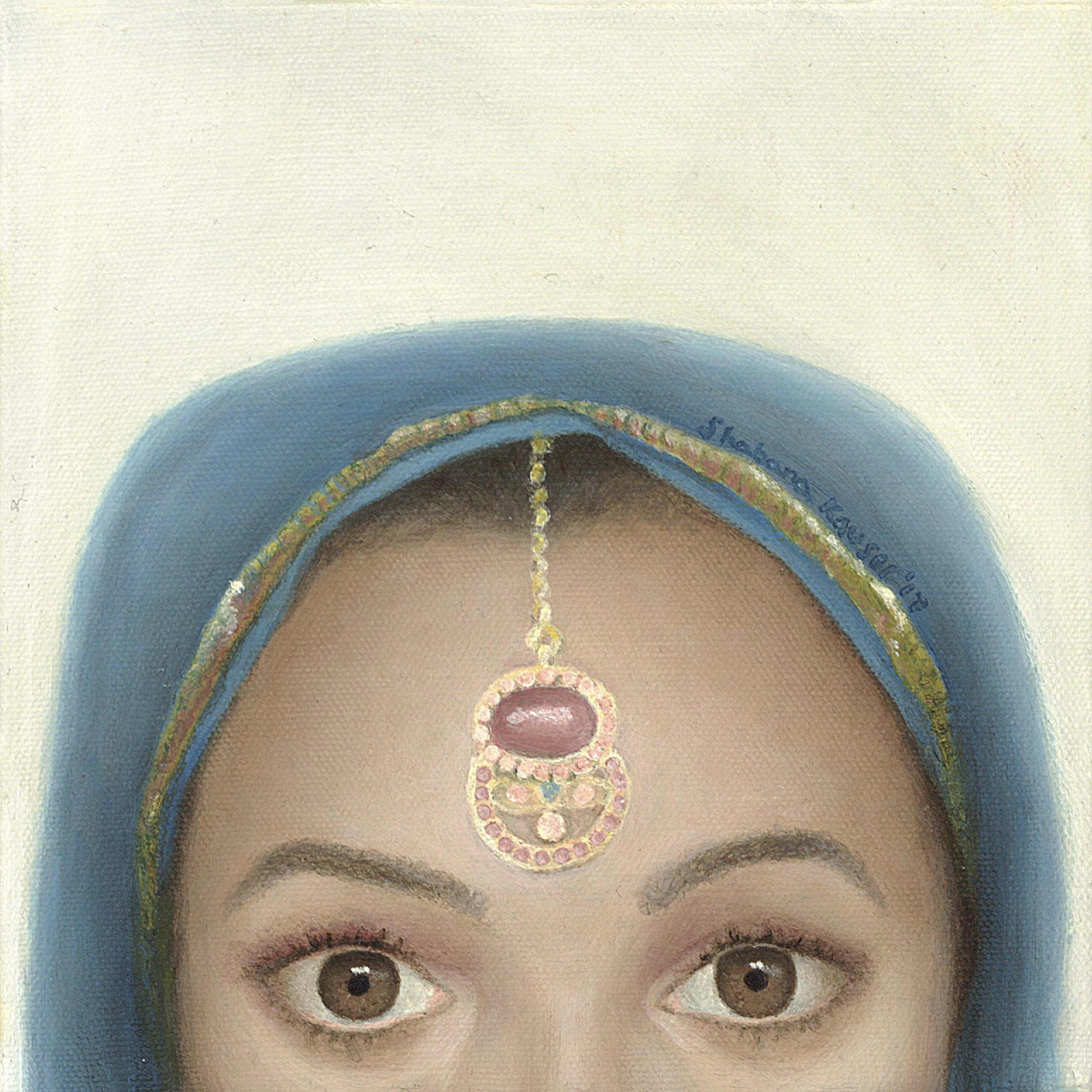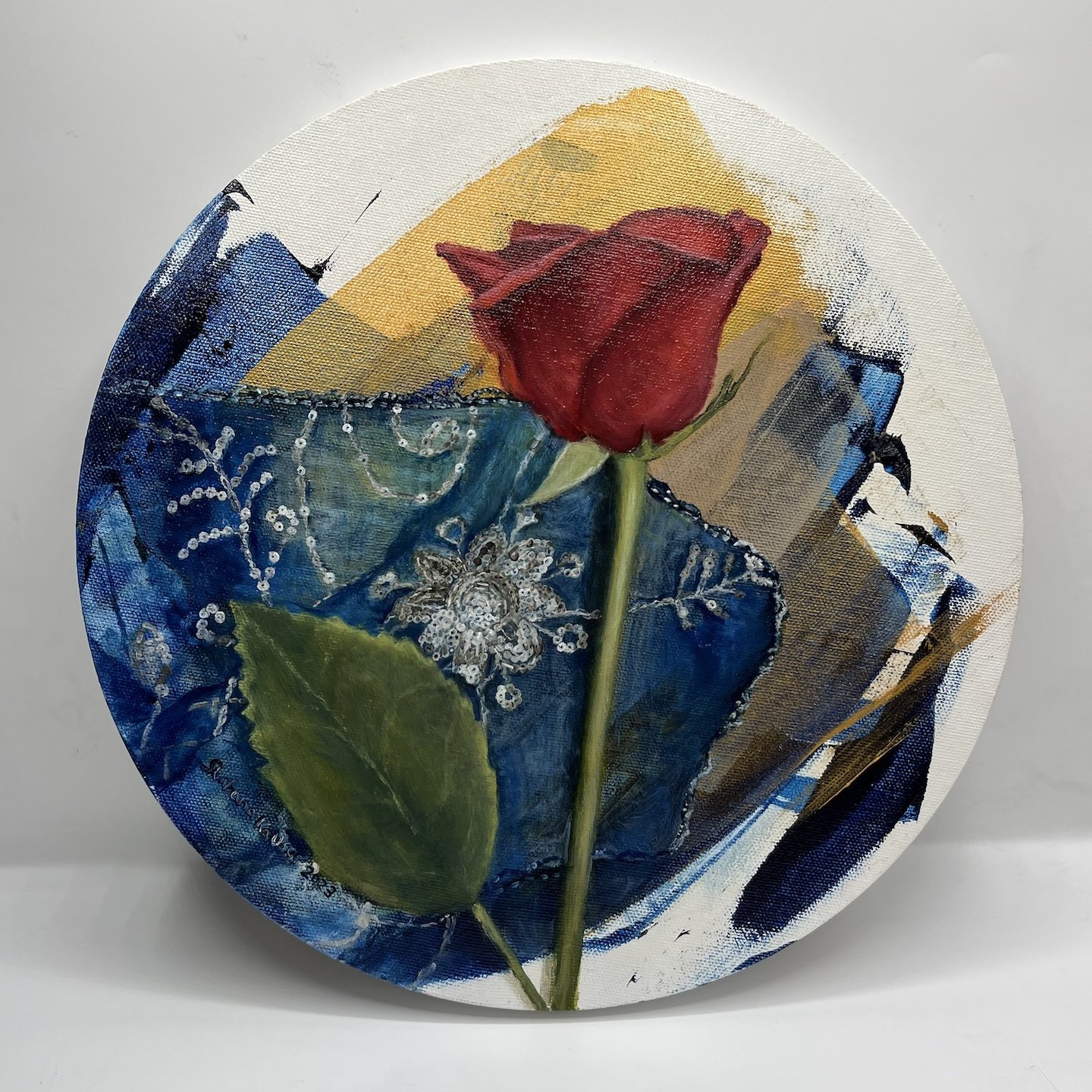Interview with artist Shabana Kauser
Shabana Kauser is an artist based in Northwest Arkansas. Originally from the UK, she has family and cultural roots in Pakistan, which shapes her artistic expressions. In 2023, Shabana completed an artist residency at The Medium in Springdale, Arkansas and was awarded an Arkansas 2023 Individual Artist Fellowship Award from the Arkansas Arts Council. More of Shabana’s work can be found at The Art Collective in Rogers and at her website shabanakauserart.com.

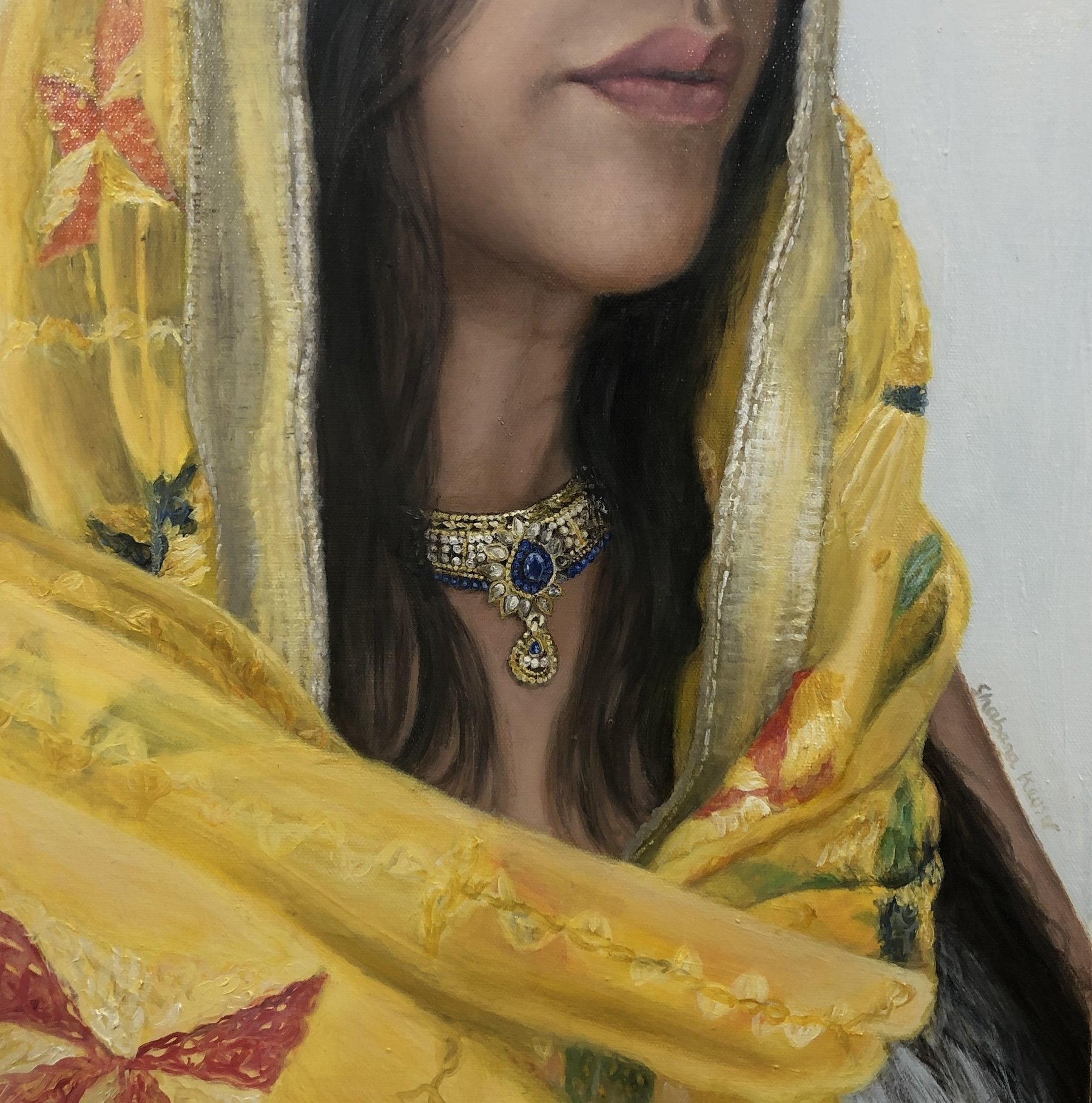
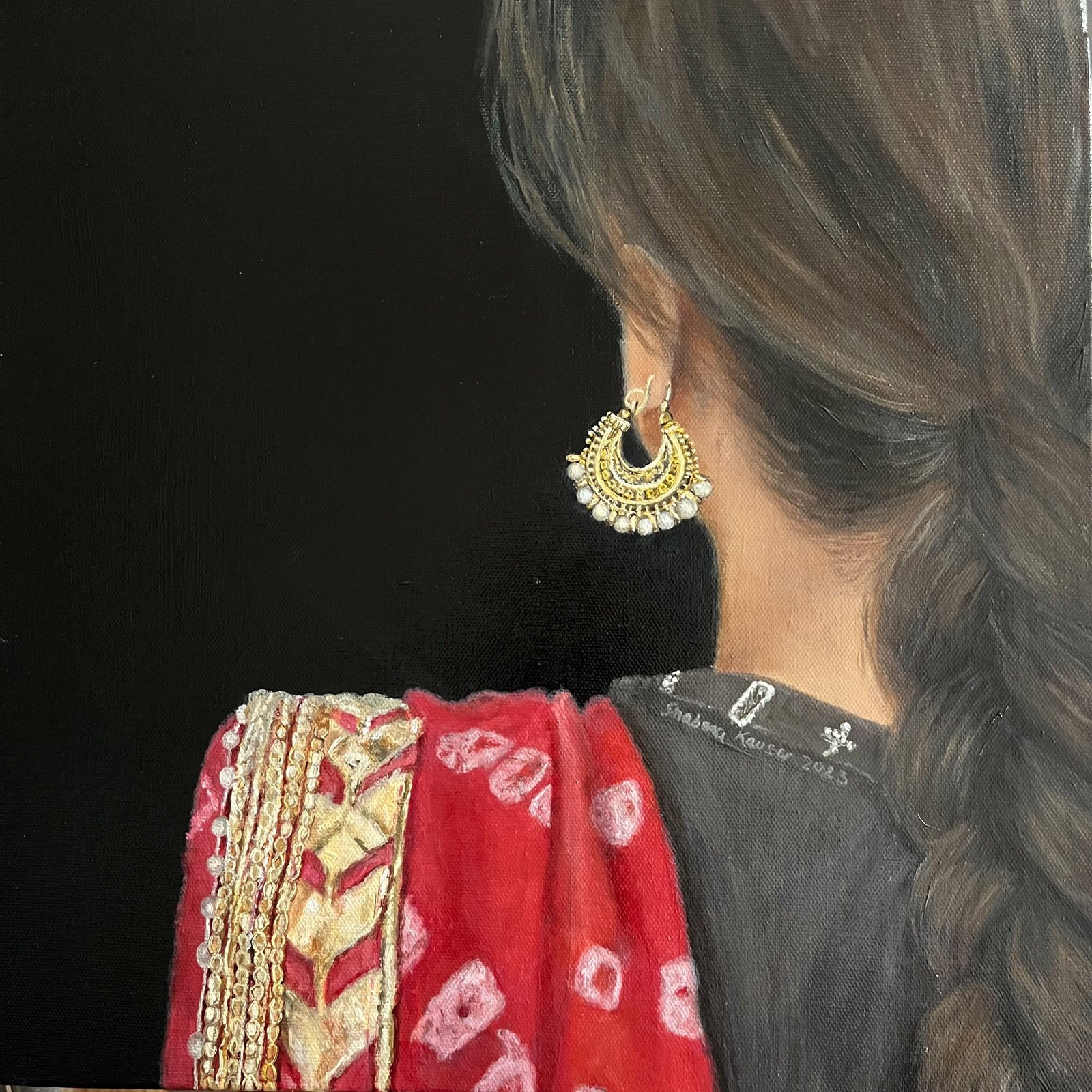
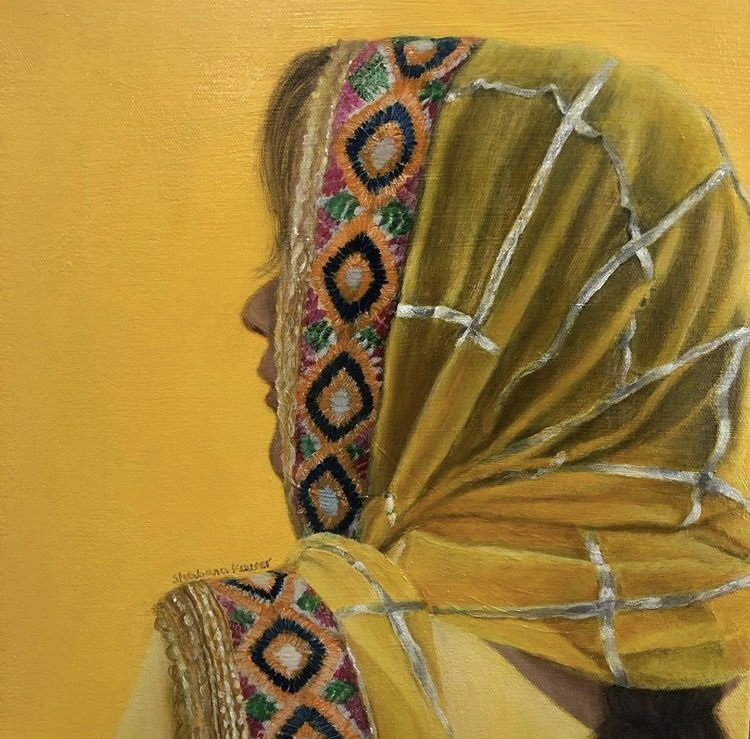
AAS: Shabana, I understand you were born and raised in the UK. What brought you to Arkansas?
SK: Thank you for doing this interview and helping me to reach a wider audience, I appreciate it. My move to Arkansas, is always an interesting conversation. I lived in the UK for over 25 years, I grew up on the suburbs of London and then lived, studied, and worked in central London. My degree is in Business IT, and my MSc in Information Management. I had corporate jobs before, during and after my studies.
My heritage goes back to Kashmir. My parents emigrated from Pakistan occupied Kashmir to the suburbs of London and set up life there. The history between England and South Asia goes back centuries. Following the second world war, and the independence of India and Pakistan and starting from the 1950’s and 1960’s, South Asian immigrants in the UK helped with the labor shortages in various industries, such as textiles, steel, engineering, the National Health Service, and public transport. In the 1970’s, my parents decided to move to the UK for a better life. I grew up in the UK, as a first-generation immigrant. Now I am an immigrant in the US.
Our move to the US was a surprise as it’s not something my husband and I actively went looking for. My husband was offered a work opportunity in Northwest Arkansas. Unfortunately, the move came with some restrictions. My visa did not allow me to work for almost 7 years. Leaving behind a productive life with a career, made my transition tough. I felt disconnected from the community for a number of years. The silver lining with my move to America has been discovering my passion for art and stepping into a creative career.
AAS: Was it much of a culture shock to move to Northwest Arkansas?
SK: Wow, where do I begin?! I’d say that moving somewhere new comes with changes and adjustments for most. I feel like I was presented with a lot of vast changes, and all in one go. We had moved from a major city, London, to a much smaller one in Northwest Arkansas. The population difference alone is huge. I was used to living in a major city with far more activity and culture. Then we moved to a different country, that naturally came with cultural differences. As I mentioned, during the first 7 years of my move, I was unable to legally work. That didn’t help my transition in numerous ways. When I discovered my art, and threw myself into the arts scene in Arkansas, that’s when I started enjoying aspects of our move.
AAS: Many of your paintings, like Bahin, celebrate the culture of the South Asian woman and the archetypal Pakistani woman. What do you see when you look at Bahin?
Bahin, 36” x 36”, oil on canvas
SK: The word ‘Bahin’ translates to sister in Urdu / Hindi. My sister was my inspiration behind this painting. I grew up with sisters and we all gravitated towards different aspects of both cultures in our own ways. I was really proud to have this painting featured at my solo exhibition in 2022, at the Fort Smith Regional Art Museum. The team there also placed a large poster of this very painting on the outside of the museum building during the duration of my show. That was powerful in many ways, not just for myself the creator, but people of all backgrounds and ages that follow and collect my work. I am glad they picked this very painting!
AAS: A frequent subject of your paintings in the traditional scarf, dupatta. Tell me about the significance of the dupatta and of the jewelry in the culture.
Dupatta #7, 20” x 16”, oil on canvas
SK: The dupatta is universal throughout South Asia, and a powerful visual that not only connects to my background, where I was constantly surrounded by traditional fabrics and my mother’s passion for sewing clothes, but it also resonates with a diverse range of people. It’s been rewarding showing portraits of women wearing the dupatta in the arts. When my work is initially seen, many people instantly know I am highlighting South Asian culture.
Traditional jewelry is so distinctive, it’s hard to miss and difficult not to include in my portraits. Many of the women my mother sewed clothes for, women I knew in the community would always add traditional jewelry, both costume and real Indian gold, alongside their outfits with bold fabrics. They just go hand in hand!
Before I discovered my passion for creating and as an adult, I didn’t fully understand how art educates and connects people. A popular conversation I’ve had with community, and through formal artist lectures I have participated in, is about the history of South Asia. How India, Pakistan, Bangladesh were once one country with British colonization. There are lots of similarities and lots of differences throughout each of the countries and regions. There are over 1000 languages spoken throughout South Asia, many different customs, traditions, spiritual practices and religions. How fabrics look and are worn also varies. Shalwaar Kameez outfits (pants and long tunic top, accompanied with a dupatta for women) are traditionally worn historically in the punjab region of Pakistan and North India. My mother created many Shalwaar Kazmeez outfits for various occasions, and all age groups.
The art world needs authentic portraits of all backgrounds and cultures. My work has opened up so much dialog within communities and at art events I do each year.
AAS: Dupatta #8 is and extraordinary portrait.
SK: Thanks, it was fun to create this painting this and I love the rich colors I worked with. When I purchased this particular dupatta, with the bold yellow and colorful details, several friends and family told me it reminded them of their ‘Mehndi’ event.
The word ‘Mehndi’ is the Urdu / Hindi language is for henna, which is a temporary dye used to create intricate patterns on hands and feet. Mehndi ceremonies are common before weddings, where the future bride and guests spend time (a day or two) applying henna patterns, and just before the wedding. Yellow is a popular color of clothing for those events. Yellow is also symbolic in different ways throughout South Asia, as it is in other countries.
AAS: Talk about your painting technique.
SK: I work from real fabrics, and jewelry that I purchase. I enjoy staging my own work, where I get to feel, see and place the fabrics how I wish. Then capturing it on canvas.
My last trip to the UK involved visiting some local South Asian retailers and purchasing and gathering inspiration from that. That’s where many of the women I knew growing up, would have shopped for rolls of fabrics, which they then dropped off to my mother, where she would tailor make outfits. Shopping for the fabrics and props in itself is a fun process. Having those props in my studio, and at times a dupatta draped over my easel as I am working on a painting has helped my creative process in many ways. Having the jewelry, my model would have posed in, by my side, being able to study it up close and see how different angles of the gold look is useful. I start with basic shapes and colors on the canvas, I build layer on layer of oil paints to capture skin tones and various textures. Then the details stage is worked in with a fine brush. I enjoy creating several paintings simultaneously, especially when I can use the same color palette.
The best part about my process is that I can bring some of the actual dupattas that I feature in paintings to art shows and events. Some of the jewelry is enjoyed through my outfit for art events, that’s fun and a great talking point with community.
Trena Ward who mentored me has been a huge influence with my work. I continue to study other artists and I am always impressed by Kehinde Wiley’s work. I’ve seen his paintings in person, and up close at various museums. The message behind his work, his art career and presence in the arts is impressive. There are also so many local artists who’s work I admire and follow, I have always been inspired by other creatives.
AAS: You began your art career relatively later in life. Was being an artist something in the back of your mind that you knew you would pursue at some point or was it totally unexpected to you?
SK: I enjoyed art classes at school in the UK, and right up to the age of 16. I never thought about it any further as a career. Creative career paths were not encouraged in my family. I gravitated towards the business world and kept going. But when I moved to Arkansas, the frustrating immigration process left me unable to work for a number of years. During that time, I tried hard to stay busy and keep my mind active. I volunteered in the community, did projects around the house, and went to as many social events as I could. I didn’t feel challenged enough and refused to give up on trying different things. One day I thought about what I enjoyed doing before I took on financial responsibilities. I went through my childhood, and one thing stood out over and over again, it was art! I used to enjoy drawing and always looked forward to art classes at school. So, I began looking for local art classes and just happened to find an oil painting class starting the following week. I took classes from a local artist, who I mentioned, Trena Ward. She was and still is a fabulous mentor and friend. I approached the art class with little expectation from myself, my main aim was to learn and enjoy my time. The more I wanted to learn, the more Trena generously shared her knowledge. We fed off each other’s energy. After a few finished paintings and sharing my work online, I immediately got positive feedback from friends and family. At this point in time, I thought they were just trying to be supportive. I didn’t read too much into it and carried on learning, then I was approached to create my first commission. That’s when I realized I was capable of doing something very different with my future. After being so disconnected from the community, art helped me to reconnect with people in a whole new way. The rich conversations it opens up, the opportunities, the way people connect with you and your work, I never imagined it to be this powerful. Art gave me the courage to share my culture and journey.
AAS: One of my favorite paintings is Silent Worker. I guess it is symbolic of some of the most influential times in your life?
SK: Silent worker was inspired by my mother’s journey. The scissors, sari trim and British flag, I felt were a great combination to illustrate a strong message. My work represents beauty, strength and determination, just some of the traits I saw in women I grew up around. Many immigrant women I knew tapped into all the skills they had to make their new lives, in a new land. While learning English, and therefore being limited with opportunities, my mother started her own business from home. My grandmother had taught her to sew while she grew up in Kashmir. Sewing traditional clothes for the community with her own business, allowed my mother to contribute in numerous ways. She is one of the many ‘silent workers’ that continue to contribute to society, the economy and communities.
AAS: How do you think your life experiences have shaped your art practice.
SK: I try and look at the positive and negative life experiences and use those opportunities to grow. I will always value many aspects of my upbringing, and my parents strong work ethic and courage to set up in a new country. I often think of the struggles I had transitioning to the US, and I have moved from one English speaking country to another. They had more vast challenges and differences to work through.
As a first-generation immigrant, and now an immigrant in the US, with my education, some bumpy moments in life, and determination it’s been rewarding taking on a new path as an artist. I’ve lost count of the number of times I’ve been told or made to feel like I don’t belong. I tend to gravitate towards where I am appreciated for me, my work ethic and ability to grow. It’s been rewarding working with creatives, curators, and organizations that value that. There are tons of those in the arts here in Arkansas.
AAS: This must be a very exciting time for you. You were recently awarded an Individual Artist Fellowship from the Arkansas Arts Council and you have been exhibiting your work all over Arkansas and beyond. What has this recognition meant to you?
SK: Honestly, I am still on a natural high from achieving that fellowship award! It was a great honor to receive this not just for me, but also the many people that follow, curate, sell and collect my work. The ones that want to see me succeed, have had strong conversations about my journey of immigration, identity and what it means to create what I create, and do what I do. It’s a celebration for those people too! To be recognized for my work by the art community in Arkansas means a great deal to me. I realize there are many talented, hardworking creatives that make up the art community in Arkansas, so to be selected amongst hundreds of applications means more than I can express in words! Thank you!

